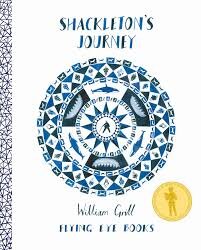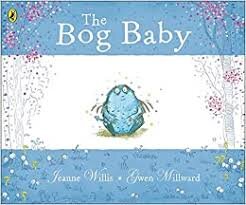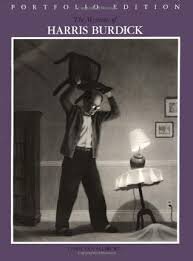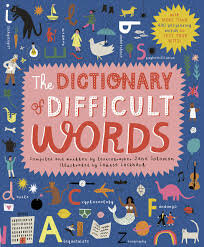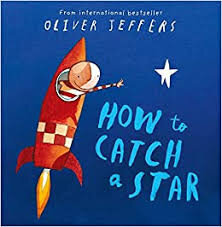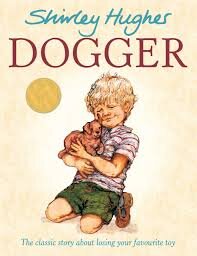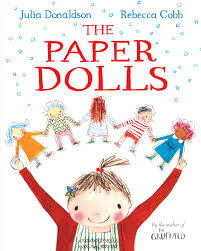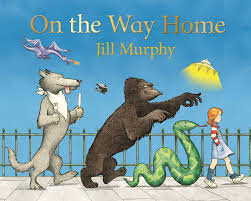Sharing the love for children’s picture books
As Valentine’s Day approaches, here at Primary English HQ we thought we’d share a bit of picture book love. So, in this article we list some of the children’s picture books we adore and a few reasons why we love them.
This article is a joint effort. Our KS1 expert Gemma has chosen five picture books she loves and and I’ve added five children’s books I love to read, share and recommend to teachers, teaching assistants and parents.
Dogger by Shirley Hughes
Is there anything more precious than the bond between a child and their beloved teddy? This children’s classic is still a firm favourite in the classroom and loved by adults and children alike. For a guided reading planning and resource pack based on Dogger, click below.
The Dictionary of Difficult Words by Jane Solomon
One of my passions is for books about words. I’ve shared a few recommendations in this article here. One of the latest additions to my collection is The Dictionary of Difficult Words. It’s an absolute treasure trove of interesting words with child friendly definitions and set out in a most eye-catching manner. It’s what I refer to as ‘a huddle book’ (more about those later on) that is, it’s one of those books that finds itself in the middle of a huddle of children who are all pouring over the facts and information inside it. I LOVE IT!
Paper Dolls by Julia Donaldson
A delightful story about memories and how nothing can truly be lost. This is a beautiful story to read aloud to children in the classroom or to children tucked up in bed. With repetitive phrases and simple rhymes, children can engage by joining in. Ask your children to make their own paper dolls and then see what adventures they take them on?
Moth: An Evolution Story by Isabel Thomas
This is truly gorgeous picture book that takes a tricky aspect of science – adaptation - and makes it wholly accessible to children (and middle-aged English consultants). On a first read it seems a simple yet poignant account of the adaptation of the peppered moth. On subsequent reads, it becomes a figuratively stunning tale of survival told through lyrical yet sparing prose. And, if that were not enough there is a final two-page spread of formally written explanatory text that is perfect for children at the top of KS2 who are honing their written style to include differing levels of formality. We have a set of Starting Points for this text that you can find here.
On the Way Home by Jill Murphy
Following the journey of a little girl who tells very tall tales, this book is a pleasure to read aloud to young children. The little girl has a brilliant imagination making this book one to inspire the young minds in front of us. Why not use this book to inspire children to write their own tall tales about what happened on their way home?
Shackleton’s Journey by William Grill
Yes, another huddle book. It’s jam-packed with fascinating information about Shackleton’s journey to the South Pole. It has the most stunning blue and white colour pallet making it a real treat for the eyes. Quite frankly, who wouldn’t want to pour over these gorgeous pages with their friends! We have a set of Starting Points for Shackleton’s Journey that you can find here.
How to Catch a Star by Oliver Jeffers
The sheer determination of this little boy who sets about catching a star is impressive. This simple story gives an important message about not giving up on the things we love. Children could use this text to write instructions for How to Catch a Star using the unique ideas Oliver Jeffers gives in his writing.
Eats, Shoots and Leaves by Lynne Truss
This children’s version of Lynne Truss’ famous rant about poor grammar is a perfect addition to every school book corner. It uses cartoons to illustrate how meaning can be lost or changed through poor punctuation and sloppy grammar. We have a vintage article here on the Primary English website dedicated solely to this wonderful little book.
The Bog Baby by Jeanne Willis
Beautiful imagery portrayed through descriptive language and stunning illustrations, this magical text makes a gorgeous addition to any bookshelf. With a message of true love meaning putting others needs before your own, this text will speak to the heart of all. For a Starting Points set based on The Bog Baby, click below.
The Mysteries of Harris Burdick by Chris Van Allsberg
We love wordless picture books. Strictly speaking this one has a few words in order to introduce the mysterious illustrations and each is also accompanied by a short caption. But, other than that, this modern classic leads the read to ask why, what, where, when, how, why as they ponder the mysteries in each of the illustrations. It’s a real favourite in upper KS2 classrooms as a way of encouraging children to infer meaning from the images and to inspire them to write their own mystery stories. Find out more about The Mystery of Harris Burdick here.
Rachel Clarke and Gemma Spence



